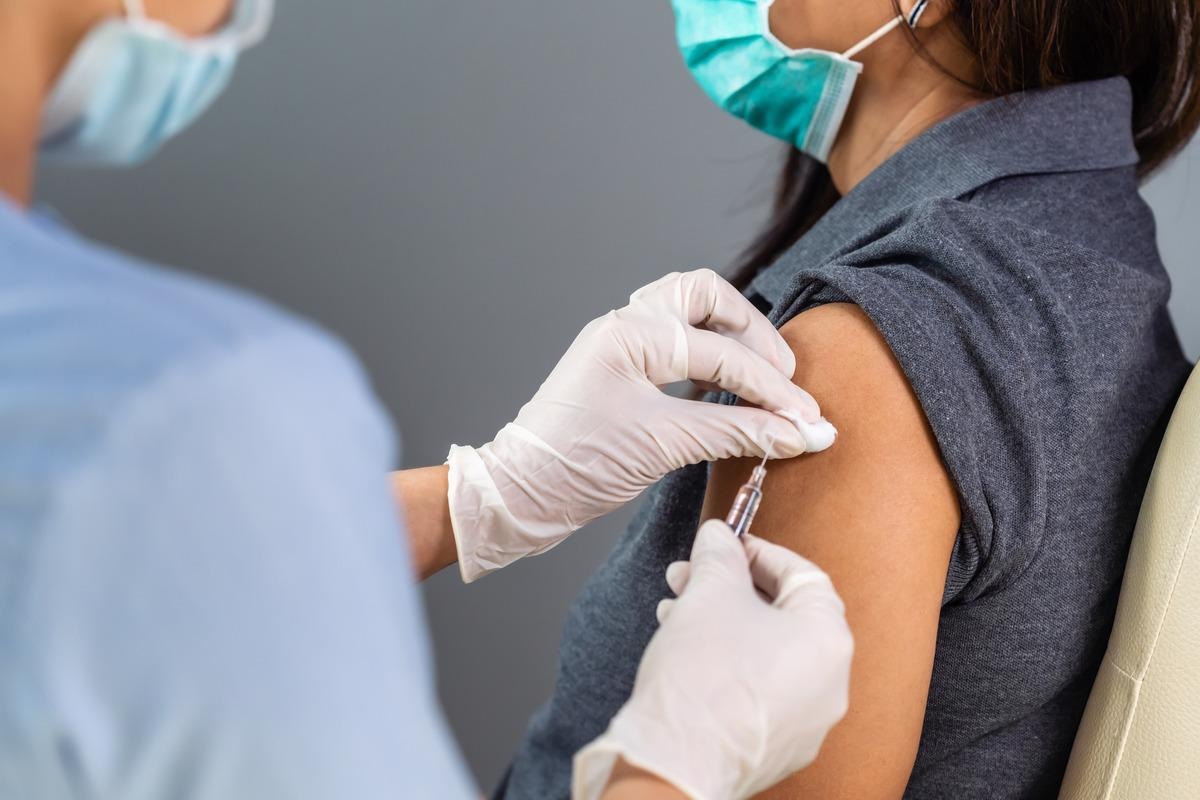Exploring waning vaccine effectiveness over time
The development and mass administration of vaccines allowed many governments to end the restrictive and costly measures enacted to help control the coronavirus disease 2019 (COVID-19) pandemic.
While the vaccines were not 100% effective at preventing the disease, they massively decreased the risk of severe symptoms developing, reducing the strain on hospitals and the number of deaths.
 Study: Duration of Protection against Mild and Severe Disease by Covid-19 Vaccines. Image Credit: BaLL LunLa/Shutterstock
Study: Duration of Protection against Mild and Severe Disease by Covid-19 Vaccines. Image Credit: BaLL LunLa/Shutterstock
However, scientists and healthcare workers have noted that the vaccine effectiveness appears to wane over time, to the extent that some countries have elected to provide their populations with a third ‘booster dose’ to help protect them further.
Researchers from the United Kingdom Health Security Agency have been investigating how much vaccine effectivity is reduced over time, and how this varies with different vaccines and variants, and have published their results in the New England Journal of Medicine.
The study
The researchers used a test-negative case-control design in order to estimate the effectiveness of the vaccines against symptomatic COVID-19, hospitalization due to COVID-19 and death due to the disease. For cases to be included, a positive PCR test must have been received. They stratified the analysis in order to better assess vaccine effectiveness against the alpha and delta variants. The scientists used a logistic regression model adjusted for age, sex, deprivation, ethnicity, care home status, region, time of infection, clinical status and health/social care worker status to estimate vaccine effectiveness. When analyzing deaths, the sample size was significantly smaller than the other analyses so the period was modeled with the use of a cubic spline. To estimate the waning of vaccine effectiveness the researchers assessed infections based on intervals of time post-vaccination, from one to twenty weeks.
Over 7 million eligible PCR tests were assessed, and ~6 million of those were successfully linked to the National Immunization Management System (NIMS) database for vaccination status – about 85% of both cases and controls. 1.7 million participants with a linked test showed a positive result, 540,000 of which were infected with the alpha variant and 1.2 million of which had the delta variant. 37,000 individuals were infected with another/an unknown variant, and these were not included in the analysis. 4.3 million negative tests were received. 2.3 million participants had received two doses of ChAdOx1-S, 2.1 million had received two doses of BNT162b2, and around 12,000 had received mixed doses. Once again, these were removed from the analysis. 22,000 with positive results were hospitalized, and just over 6000 died.
In general, the mRNA vaccines than the ChAdOx1-S vaccine with regard to severe outcomes, as well as with the alpha variant compared to the delta variant, and younger individuals compared to older individuals. The scientists ensured that logistic regression results for all-age analysis were included within the models. Generally, vaccine effectiveness against symptomatic disease from the delta variant was at its highest shortly after the second dose. By 20 weeks post-vaccination, vaccine effectiveness decreased to 44.3% for ChAdOx1-S, and 66.3% for BNT162b2. As expected, vaccine effectiveness decreased more rapidly and to a greater extent in older individuals.
A similar level of reduction in vaccine effectiveness was also seen in the level of protection provided against hospitalization. The ChAdOx1-S vaccine showed 80.0% protection against hospitalization at 20 weeks, compared to 91.7% for the BNT162b2 vaccine. This same level of waning protection could be seen against deaths for both vaccines. This was again exacerbated in the oldest age group where information was available. Results from sensitivity analysis of hospitalizations that had been coded as respiratory admissions showed similar results to the initial analysis, as did analysis examining only control participants. When the researchers stratified the data according to risk-group status, they identified much greater waning than normal against hospitalization with the delta variant among those over 65 who were also clinically extremely vulnerable. Clinical risk groups of those 40-64 were also at greater risk than those not clinically vulnerable.
Analysis restricted to those over 80 who received BNT162b2 before January 2021 revealed lower vaccine effectiveness among participants with a shorter interval between doses compared to those who had a longer wait. However, confidence intervals did overlap between these two groups, so this likely needs further investigation.
Conclusion
The authors highlight that they have provided strong evidence against waning protection against symptomatic disease from both ChAdOx1-S and BNT162b2, but point out that protection against hospitalization and death remains at much higher levels for at least 20 weeks post-vaccination. While the ChAdOx1-S vaccine does appear to wane more quickly than BNT162b2, this does vary based on the individual receiving the vaccine. This information could help to inform public health policymakers in the future and could influence the debate over a fourth dose.
- Andrews, N. et al. (2022). Duration of Protection against Mild and Severe Disease by Covid-19 Vaccines. New England Journal of Medicine. doi: 10.1056/NEJMoa2115481 https://www.nejm.org/doi/full/10.1056/NEJMoa2115481
Posted in: Medical Science News | Medical Research News | Disease/Infection News
Tags: Coronavirus, Coronavirus Disease COVID-19, covid-19, Healthcare, Immunization, Pandemic, Public Health, Respiratory, Social Care, Vaccine

Written by
Sam Hancock
Sam completed his MSci in Genetics at the University of Nottingham in 2019, fuelled initially by an interest in genetic ageing. As part of his degree, he also investigated the role of rnh genes in originless replication in archaea.
Source: Read Full Article


